Outreach Best Terminology
Customize this training to give your sales team the help they need directly in Outreach.io to maximize sales rep productivity and pipeline.
01. 360 view
The 360 Dashboard is your daily command center that guides you through your day to complete key sales activities.
The charts and metrics at the top inform you of tasks for the week and indicate the past due and upcoming tasks you should do today.

On the right side is a live activity feed with in-the-moment updates of email opens, replies, and clicks. If you’d like to filter this information, you can do so by date range, specific individuals, or event type.

At the bottom you’ll see a list of today’s tasks. As prospects move through your sequences, you’ll see tasks appear to create a manual email, make a phone call, or complete tasks. You can sort this by priority - which is labeled by the sequence step it comes from - or by the prospect’s engagement - which is an algorithm Outreach uses to score prospect engagement.

02. Accounts
Accounts in Outreach allow you to connect and view data for all prospects associated with a specific account. Once prospects are added to an account, you can view data-driven insights alongside open and/or historical prospect tasks, emails, calls, sequences, and activity.
Creating Accounts
Before prospects can be added to an account, you'll will need to create an account. You can create one account at a time from within Outreach using the action button. You should not need to create accounts manually if you have Outreach connected to your CRM.
1. On the top right hand corner of Outreach, click on the quick actions button.
2. Select "Account" from the options that appear.
3. Enter the Account name, domain, account owner, and any relevant tags.
4. Click "Create" and you'll be automatically redirected to the account overview page
NOTE: To add additional account fields, click "edit account" on the pop up box that appears, or click "edit" on the top right corner of the newly created account page.

03. Action Item
Action items can be anything that is not a call or email activity. This can include social selling sending snail, mail gifts, swag or any internal activities that are not customer-facing.
04. Activity
Activity tabs will show all activities associated with prospects and the object you are viewing. This tab resides on Sequences, Accounts, Prospects and Opportunities.
05. Add filter
Adding a filter allows you to see a subset of the prospects on the current View. These filters can be any field that are relative to those prospects.
You can see sequence information, you can add boolean searches and any other demographics or custom fields you might be bringing in from your CRM system. Refer to this link for a full list of filtering options https://support.outreach.io/hc/en-us/articles/4401830852507-List-View-Filter- Options
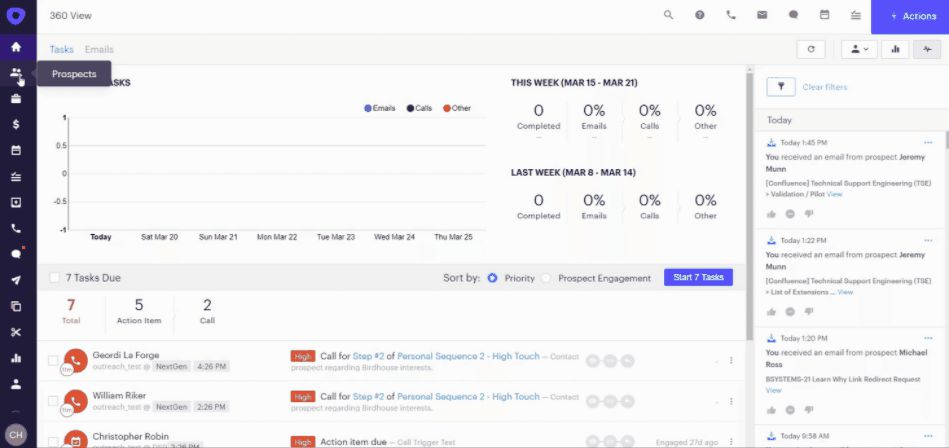
06. Agenda
Meeting types are customizable templates that you can use to book meetings fast with your customers. Each meeting type will have a unique link that you'll be able to share with customers or internal stakeholders to book a meeting on all calendars necessary to join the meeting.
There's no limit to meeting types. You will be able to create a type name to locate your template internally, a meeting title which will be shown to whoever books or who is added to that meeting, the location which you can use a static Zoom link or other web conferencing links.
We recommend using {{sender.conference_url}} as a variable, and it will populate the same value every time and allow others to utilize the same template. The description is where you can include the agenda for the call and the {{sender.conference_details}} variable for all of the additional information to access the meeting.
- Set the duration of the meeting to fill the needed space on the calendar.
- Change the ownership of the type to with others or keep private to yourself.
- The last option is to choose a round-robin functionality that will allow you to book other people at this time, if this meeting has been clicked on by Prospect.

Manual
- The meeting can be assigned to anyone in the organization. Outreach Users booking a meeting select an assignee for the meeting from a list of all users with connected calendars.
- There is not a provided ordering.
- Public calendar and Insert availability links are specific to an individual user and allow meetings to be booked only on that user's calendar.
Round Robin - Strict
- The meeting is assigned evenly amongst a team and cannot be adjusted by the meeting booker. The team member who currently has the least meetings booked is selected as the assignee.
- This selection cannot be changed by the user.
- Public calendar links are linked to the team rather than a specific user. When a Prospect visits the public calendar link for these types, the User with the fewest meetings is selected and the Prospect is presented with these available times.
- Insert availability links - The assignee is selected when the meeting is applied.
- Select the team you want to assign to this calendar
Round Robin - Flexible
- Meeting is assigned evenly amongst a team but can be reassigned to any available member of that team. The team member who currently has the least booked meetings is selected as the assignee.
- This selection can be changed by the User. When changing the assignee, users are displayed in order by the user's current meeting counts from fewest to most.
- Public calendar links are linked to the team rather than a specific user. When a Prospect visits the public calendar link, the user is presented with the availability of all users on the team.
- Upon selecting a timeslot, the meeting is booked for the user with the fewest meetings who is available at that time.
- Insert availability links - The assignee is selected when the meeting type is applied.
- Select the team you want to assign to this calendar
07. Auto emails
Auto emails help you reach more Prospects with less effort. Your emails will automatically send out to Prospects based on the time interval you set for each step.
For Example: Let’s say your automatic email sends out individual emails on days 1, 3, and 7. All you have to do is start your sequence and add the Prospects to the Sequence. Now your Prospects will receive these emails with the specified templates on days 1, 3, and 7.
08. Calendar
The calendar page shows your current calendar month on the left and work week on the right (This is the default filter but can be changed) and what calendar events you have in that time frame.
You can change the calendar view on the right by selecting day, week, work week or entire month and see what events are scheduled for those time frames.
You can choose to only show Prospect meetings and you can also add someone else's calendar, who is on your team to show their availability.

09. Call
Call tasks are tasks created from a sequence or a one-off follow-up. This will show a phone icon next to call tasks and where that task originated from.

10. Calls
Opportunity calls will show any phone calls made on this opportunity and the disposition associated with it.
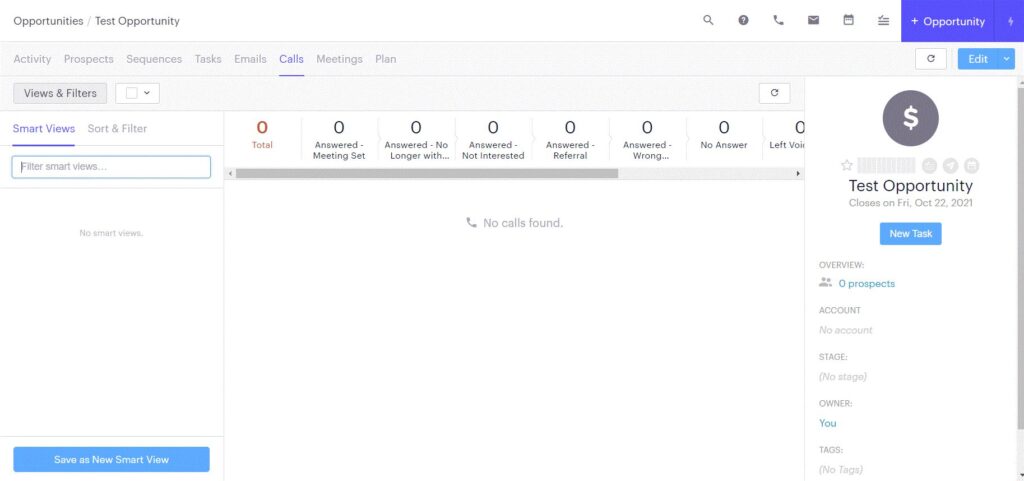
11. Email
One off email tasks or sequenced email tasks that are generated by a particular step of a pre- created sequence.

12. Emails
Look at your scheduled emails from a sequence or bulk send of the next 7 days. Here you'll find all of the mailings and their current state of drafted, scheduled, delivering, delivered, unopened, opened, clicked, replied, positive replies, failed, bounced and opted out.
13. Failed Message
A Failed Message is one that could not be delivered by Outreach. This is a safety setting by Outreach that ensures that emails that shouldn't go out don't. When a prospect is marked failed, the user can hover their mouse over the 'failed' label and it will give a reason, some of the most common being:
- Prospect daily email limit exceeded
- Missing template variable
- Template syntax error
- SMTP error - user name credentials are incorrect
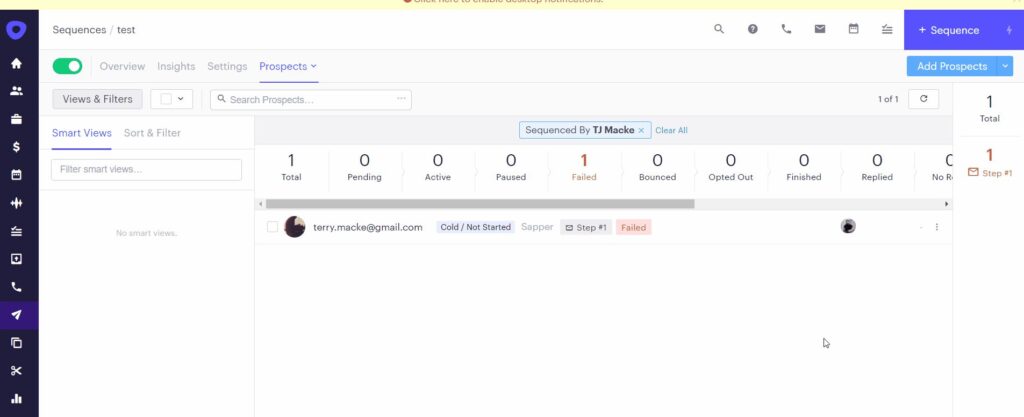
14. Filter dashboard by…
Use the filter to see other reps on the team or during 1:1 sessions to coach a colleague on how to improve using Outreach best practices.
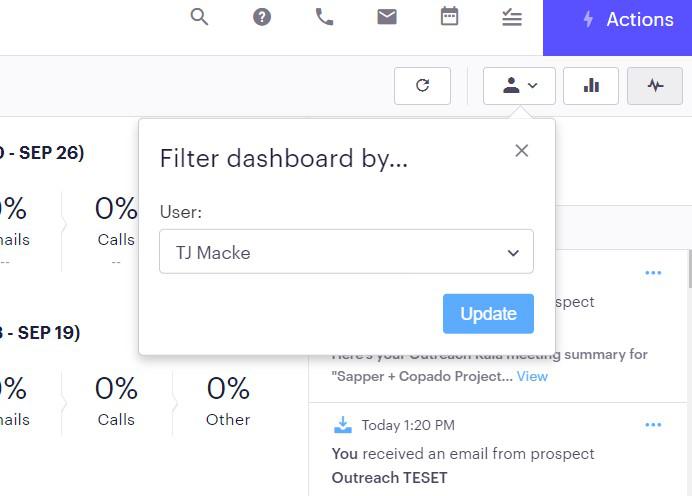
15. Last Contacted
This is the amount of time that has elapsed since the prospect has last been contacted.
16. Last week
Last weeks activity at a glance. You'll find the sum of completed tasks from last week separated by emails, calls and action items.

17. LinkedIn Task
LinkedIn Tasks are a key step that many teams integrate into their daily workflows. These activities may include steps like sending a connection request, viewing a Prospect’s profile, interacting with posted content, or sending a message via LinkedIn InMail.
18. List Views Outreach
List Views allow Users to search, filter, and view specific records in a list. Additionally, Users can save these custom views for future access. List Views can be used on the following pages: Prospects, Accounts, & Opportunities

19. Manual Email
Manual Emails are used for sending out customized emails. When a Prospect enters a manual email step, a manual Task will appear in your Tasks tab once the Prospect has entered that step. This email task will be due at the time interval you select for the step. The task will be completed when the email is sent and the Prospect will progress to the next step.
For Example: Let’s say the time interval is set for 3 days and the Prospect just entered the manual email step. This task will show up in the Tasks tab immediately, showing that the email is due 3 days from now. You can pre populate these emails with templates, then customize them further when you send them.

20. Meetings
Outreach Meetings integrates with your calendar, letting you create reusable meeting templates for the Title, Agenda with conferencing details and personalize your invites with dynamic variables.
21. Missing Template Variable
A failed message of Missing Template Variable indicates the sequence, template references variables not populated on the Prospects Profile.
For example, missing nickname, company name, etc. Users must review the template thoroughly and update as applicable.
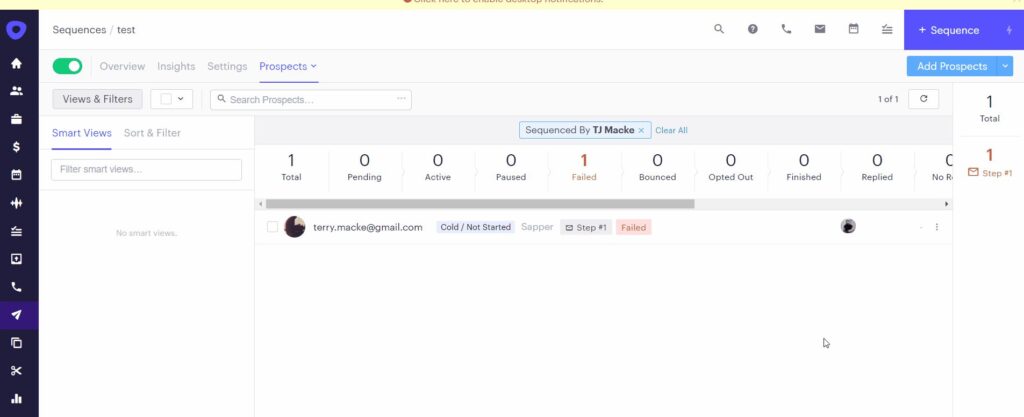
22. My Accounts
My accounts is the default list view when you click on accounts. It will show any accounts that are in your name as an owner.
You can change this view by clicking the drop-down next to "my accounts" and choosing a view that you've either created or a view that a colleague has created and shared with you. Click on the elipses to set the chosen view as the default going forward.

23. My Opportunities
"My Opportunities" is a list view of opportunities that is set as a default list view when clicking on the opportunities page and will only show opportunities owned by you.
To change the list view, click on the drop-down next to my opportunities to select a different view or set an updated view as default.
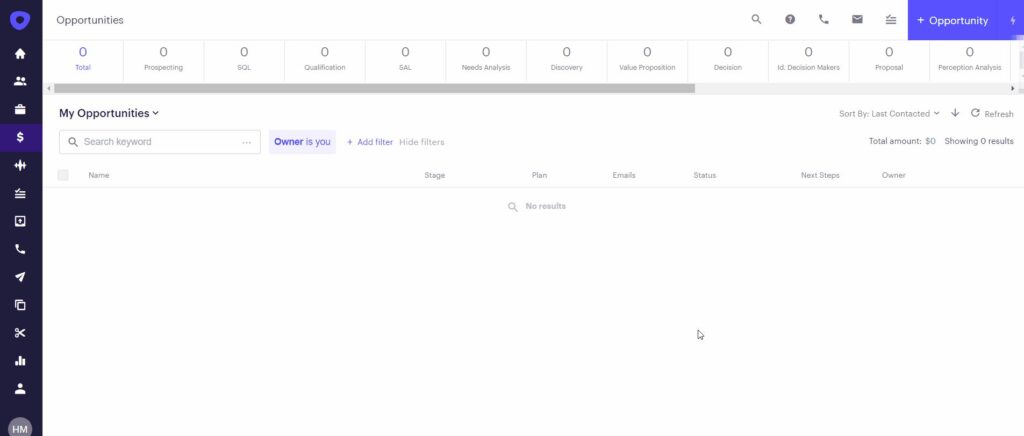
24. My prospects
"My Prospects" is the out-of-the-box default view when you click on your prospects page.
This will show all prospects that you own in the Outreach platform.
Clicking on the drop-down allows you to see any other list views you have created or shared with you. You can even look at colleagues views by clicking on the last option at the bottom where it says Colleagues.
NOTE: For more information on how to create list views -
https://support.outreach.io/hc/en-us/articles/4401830852507-List-View-Filter-Options

25. Next Steps
Next steps will surface your notes for outstanding action items that need to take place to move the project forward. These notes can be updated in Outreach or will pull directly from your CRM if it's integrated with Outreach.


